Contents
Large bright flowers on tall stems, decorating the fences and flower beds of summer residents, are familiar to everyone since childhood. Mallow attracts attention with its decorativeness and grace. It exists in several species, by crossing which a magnificent terry mallow was obtained.
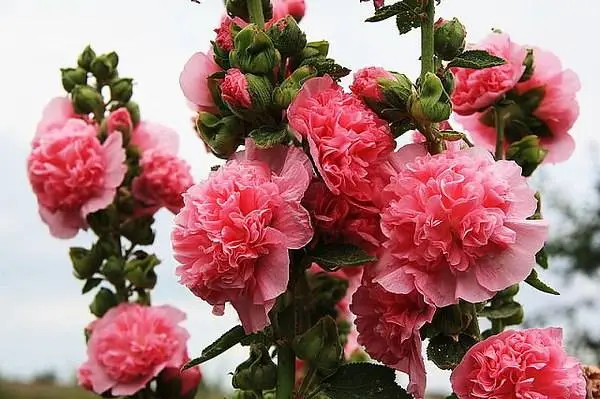
Terry mallow flowers are a hybrid species obtained as a result of many years of work by breeders. They resemble peonies in their appearance and form a variety of beautiful shades – from pink to purple.
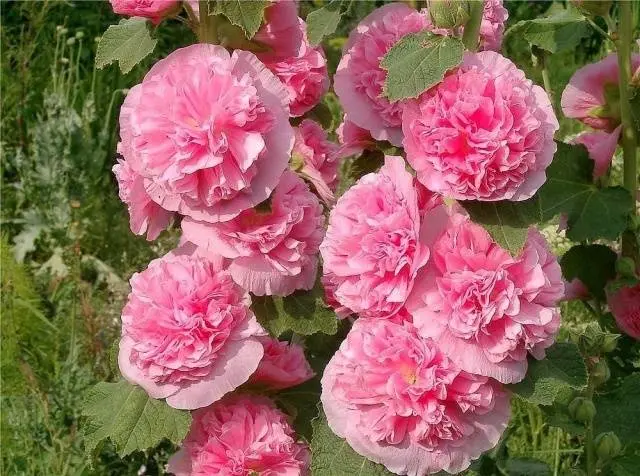
Characteristics of the plant
Malva has other names – mallow, stockrose, marshmallow. In nature, there are more than 3 dozen varieties of a flower, including annual and perennial, wild and cultivated species. Most of them are represented by herbaceous plants growing up to 2 m. They are indispensable in landscape design and look great both in single and group plantings, can be an excellent colorful background for smaller plants in flower beds. Due to the long flowering period, the terry mallow remains the decoration of the site until mid-September.

Site Selection
Terry mallow flowers take root better, planted immediately on a permanent place, where they will grow in the future. Therefore, it is important to immediately choose the right site. Mallow perennial loves open areas, sufficiently lit by the sun. In shady places, its stems reach for the light and become thin and weak. The lack of light also reduces its flowering. The delicate petals and tall stems of terry mallow are easily damaged by the action of the wind, so the site must be protected from drafts. Flowers grow well on light, fertile soils with good drainage – loams are ideal. At the same time, perennial mallow feels great even on poor soils, if you feed it regularly.

When preparing a site for planting terry mallow, the following measures are necessary:
- deep digging of the soil;
- on problem soils, the addition of compost is required, it can be replaced with rotted manure;
- The drainage properties of the soil can be improved by adding coarse sand.
Growing Options
The timing of planting mallow terry is determined by the method of its cultivation – from seeds or seedlings.
Seed cultivation
Sowing perennial mallow seeds in open ground in May or June, you can expect them to bloom only next year. For sowing, you can collect your own plant seeds from already faded bushes in July-August to plant them next season.
The best germination is demonstrated by perennial mallow seeds collected two years ago. In the first year, germinated plants form rosettes of large, slightly pubescent leaves and develop powerful branched roots. But you can get flowers earlier if you plant seeds in a greenhouse. Sowing seeds does not require the preparation of holes – they can simply be placed in a flower bed and sprinkled with earth. If you take care of regular watering, the first sprouts of perennial mallow will sprout in 2-3 weeks.
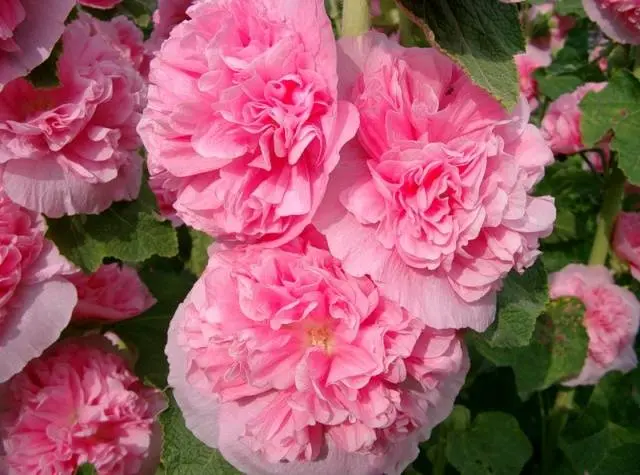
Experienced gardeners prefer the autumn sowing of mallow seeds. They are planted in holes up to 3 cm deep with an interval of 40-50 cm. The holes are covered with loose fertile soil or peat. For the winter, crops should be covered with fallen leaves or straw. Before sowing, the seeds are checked for germination.
Seedbed method
With the seedling method, the seeds of the terry mallow are sown with the beginning of spring – approximately in March-April, the grown seedlings are transferred to open ground by mid-summer. In order to speed up the emergence of seedlings, you should first soak the seeds in warm water for several hours, and after sowing, cover with glass or a transparent film.

Since the terry mallow does not tolerate transplanting, it is better to immediately plant the seeds in peat cups. They can then simply be transferred to open ground. The seedling method does not always ensure flowering in the same year, but the earlier the plants are planted, the faster it comes.
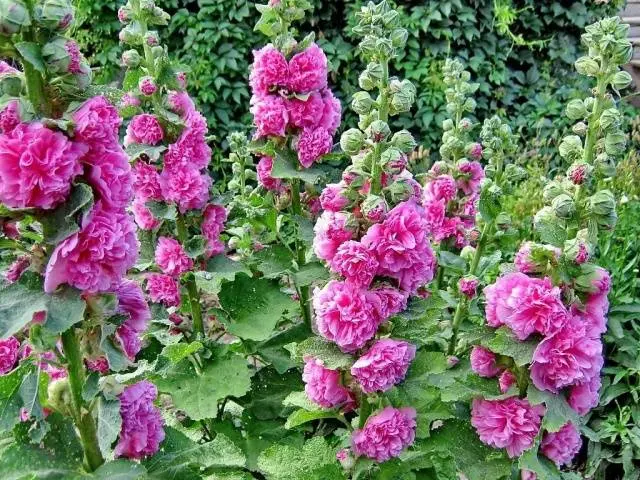
The first sprouts of perennial mallow should appear in 10-15 days. During this period, you should ensure:
- a constant temperature of about 20 degrees;
- regular watering, which will accelerate the development of seedlings;
- removal of weak instances;
- hardening – it will help plants to adapt faster in the open field in the future.
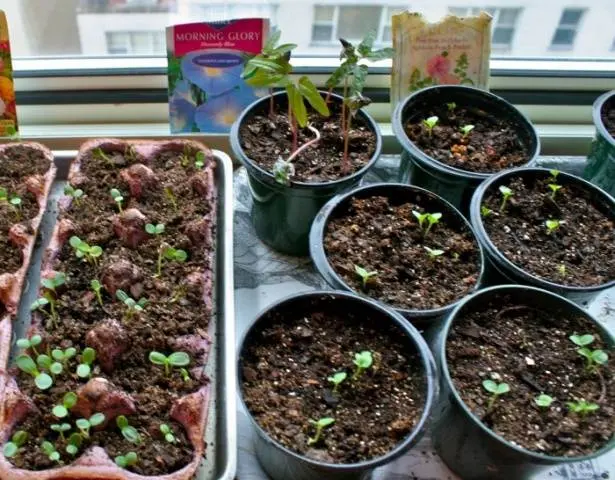
Some gardeners are engaged in picking seedlings when 3 true leaves appear, although this procedure is quite laborious and stuns the growth of young terry mallow bushes. When picking, the plant should be transferred along with a lump of earth in order to keep its roots intact. A more preferable option is when several seeds are planted in a peat pot, and then the healthiest and strongest plants are left.
September will be the most comfortable time for transplanting plants – young bushes of perennial mallow will have time to strengthen their root system by the beginning of frost, and for the winter they can be well covered with a layer of peat or fallen leaves. By spring, the plants will gain enough strength for further development and flowering.
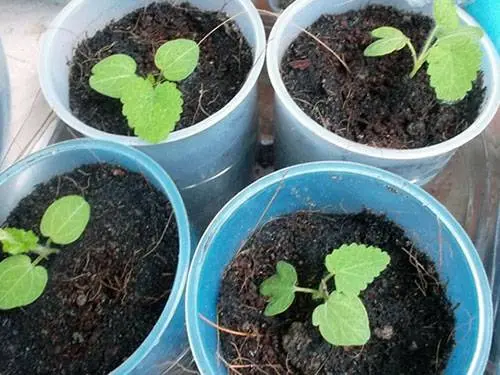
Reproduction by cuttings
Terry mallow varieties also propagate with the help of cuttings planted in greenhouses or at home in boxes. However, this method is only possible for experienced gardeners, as it is characterized by a low degree of survival rate of cuttings. The advantage of propagation by cuttings is the possibility of obtaining plants of the same variety, with the same properties. Terry mallow cuttings, as seen in the photo, can be planted in spring or summer:
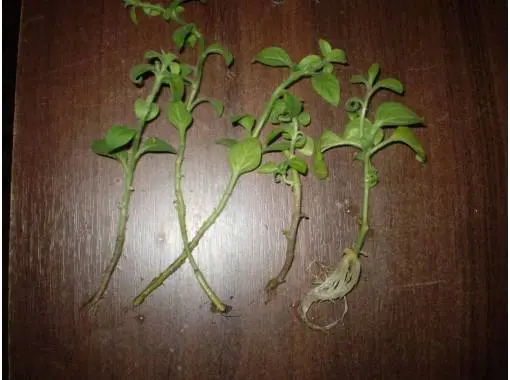
- for summer planting, cuttings cut from the stem are used;
- for spring – they are cut already in adult plants in the root area.
Propagation of terry mallow by cuttings should be done very carefully, observing the correct technology:
- for cutting cuttings, a well-ground garden knife is used;
- the cut is treated with charcoal powder;
- leave them for 5-6 hours to dry the sections;
- ready-made cuttings of perennial mallow are placed in a nutrient substrate or peat pots;
- with the help of irrigation provide constant soil moisture;
- evidence of the rooting of the cuttings will be the appearance of fresh leaves;
- when the plants grow, they are transplanted to a permanent place.
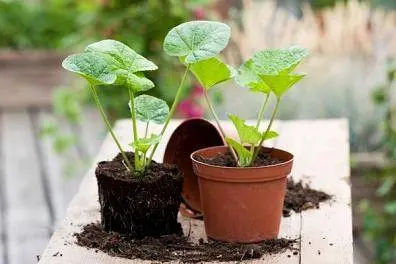
Agrotechnics of flowers
Malva terry perennial is considered an unpretentious plant. Caring for it consists in the timely conduct of ordinary agrotechnical measures.
Organization watering
The perennial mallow has a long and branched root system that goes deep into the ground. Therefore, there is no need for frequent watering – in sunny weather, once or twice a week is enough, and in dry seasons, plants can be watered up to three times. Perennial mallow consumes the largest amount of moisture during the period of mass flowering, but even then water stagnation in the soil should not be allowed, otherwise the plant may die.
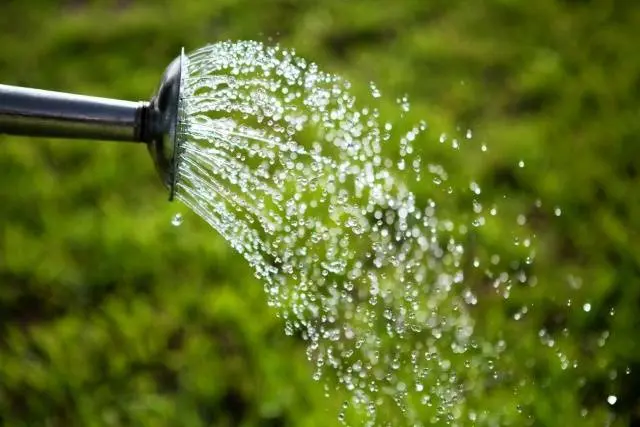
Proper feeding
Mallow perennial terry responds very well to regular feeding in small doses. Phosphorus and potassium salts must be applied to the soil every 2,5-3 weeks, and organic – once a year. Especially a lot of nutrients are consumed by plants during the budding period, so it is necessary to feed them with complex fertilizer. During the entire growing season, flowers should be mulched with compost.
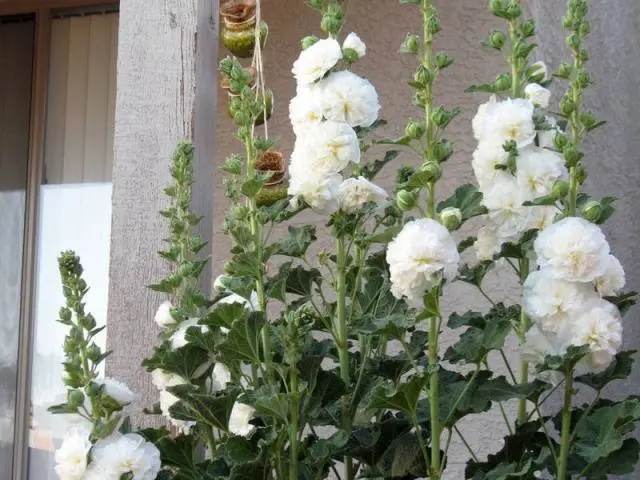
Other care measures
The root system of the terry mallow, deep into the soil, requires the creation of favorable conditions for the access of oxygen. It is necessary to periodically loosen the soil under the flowers. However, this procedure requires caution, since even minor damage to the roots is fraught with the death of the entire flower. Simultaneously with loosening, the soil should be freed from weeds, otherwise they can drown out the growth of young plants.
Terry mallow is an ornamental plant that is used to create a variety of compositions, which is why it is so important to shape the plant with pruning. It should be carried out before or after the flowering period. During pruning, you must also remove all dried or damaged shoots.
Mallow perennial refers to tall plants. If the area with double flowers is not protected from gusty winds, they require a garter to stable supports.
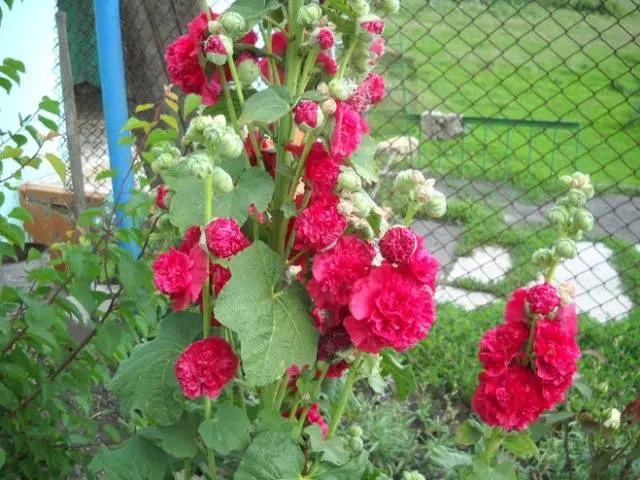
In middle and more northern latitudes, mallow flowers require shelter for the winter. It can be organized with a thick layer of fallen leaves or straw, under which the terry mallow will winter well. Spruce spruce branches will also be a good shelter.
Disease control
Of the diseases that most often affect perennial mallow, powdery mildew and leaf mosaic can be distinguished. It happens that its leaves are covered with brown spots of rust. When the first signs of the disease appear, all diseased parts of the plants must be removed and burned, and the bushes should be treated with Bordeaux liquid and appropriate preparations. For the prevention of diseases, perennial mallow should not be planted for 3-4 years in those areas where cultures previously grown, subject to the same pathologies.
The result of waterlogging the soil under the plants may be the appearance of slugs. Of the other pests, mallow is more often affected by spider mites or aphids. From them save insecticidal or folk remedies. For example, a soapy solution of dry mustard effectively fights against aphids.
Conclusion
Simple rules of care, a variety of varieties and the extraordinary charm of flowers make terry mallow indispensable in garden compositions and popular with summer residents.









